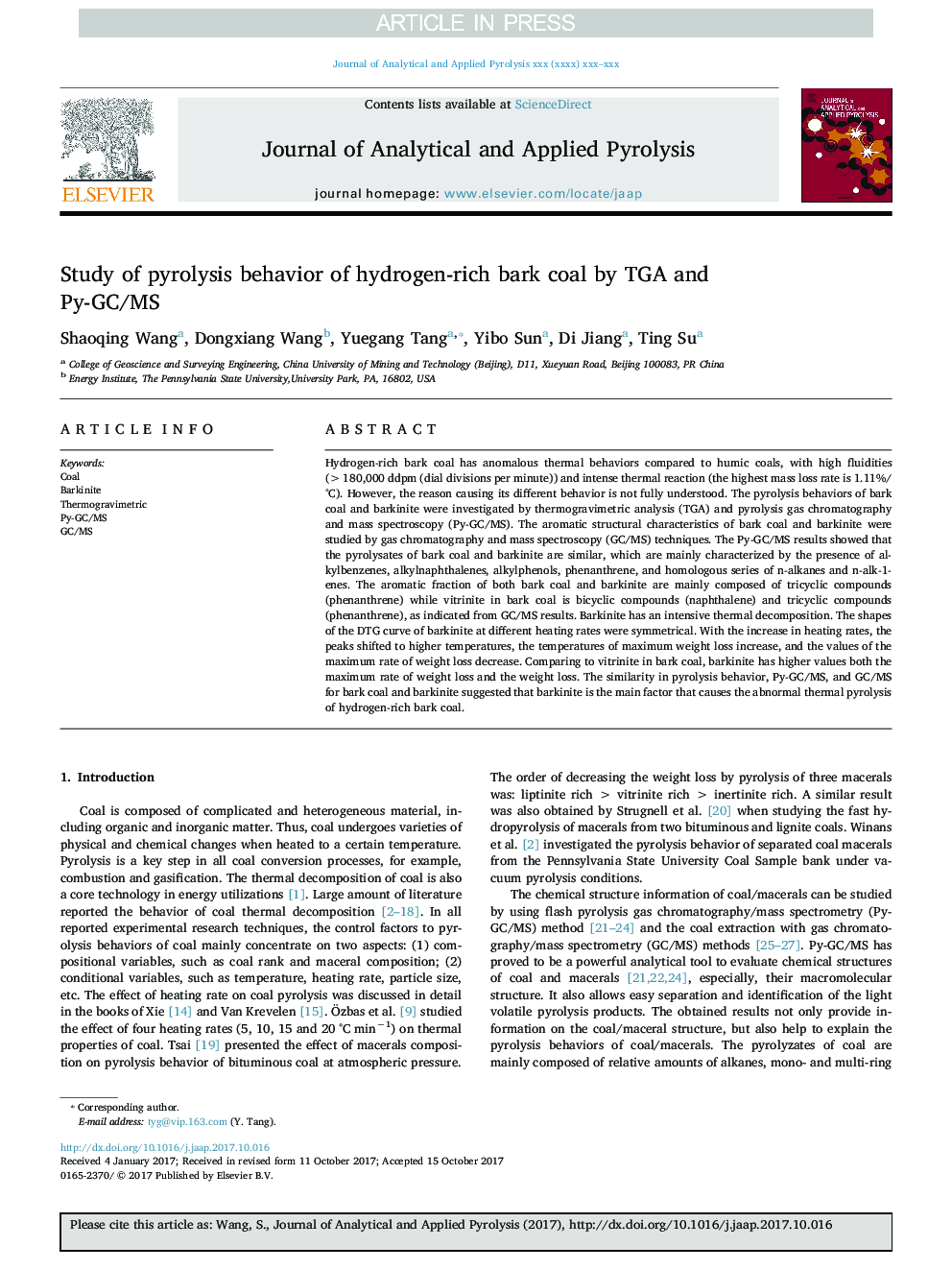| Article ID | Journal | Published Year | Pages | File Type |
|---|---|---|---|---|
| 7606459 | Journal of Analytical and Applied Pyrolysis | 2017 | 7 Pages |
Abstract
Hydrogen-rich bark coal has anomalous thermal behaviors compared to humic coals, with high fluidities (>180,000 ddpm (dial divisions per minute)) and intense thermal reaction (the highest mass loss rate is 1.11%/°C). However, the reason causing its different behavior is not fully understood. The pyrolysis behaviors of bark coal and barkinite were investigated by thermogravimetric analysis (TGA) and pyrolysis gas chromatography and mass spectroscopy (Py-GC/MS). The aromatic structural characteristics of bark coal and barkinite were studied by gas chromatography and mass spectroscopy (GC/MS) techniques. The Py-GC/MS results showed that the pyrolysates of bark coal and barkinite are similar, which are mainly characterized by the presence of alkylbenzenes, alkylnaphthalenes, alkylphenols, phenanthrene, and homologous series of n-alkanes and n-alk-1-enes. The aromatic fraction of both bark coal and barkinite are mainly composed of tricyclic compounds (phenanthrene) while vitrinite in bark coal is bicyclic compounds (naphthalene) and tricyclic compounds (phenanthrene), as indicated from GC/MS results. Barkinite has an intensive thermal decomposition. The shapes of the DTG curve of barkinite at different heating rates were symmetrical. With the increase in heating rates, the peaks shifted to higher temperatures, the temperatures of maximum weight loss increase, and the values of the maximum rate of weight loss decrease. Comparing to vitrinite in bark coal, barkinite has higher values both the maximum rate of weight loss and the weight loss. The similarity in pyrolysis behavior, Py-GC/MS, and GC/MS for bark coal and barkinite suggested that barkinite is the main factor that causes the abnormal thermal pyrolysis of hydrogen-rich bark coal.
Related Topics
Physical Sciences and Engineering
Chemistry
Analytical Chemistry
Authors
Shaoqing Wang, Dongxiang Wang, Yuegang Tang, Yibo Sun, Di Jiang, Ting Su,
